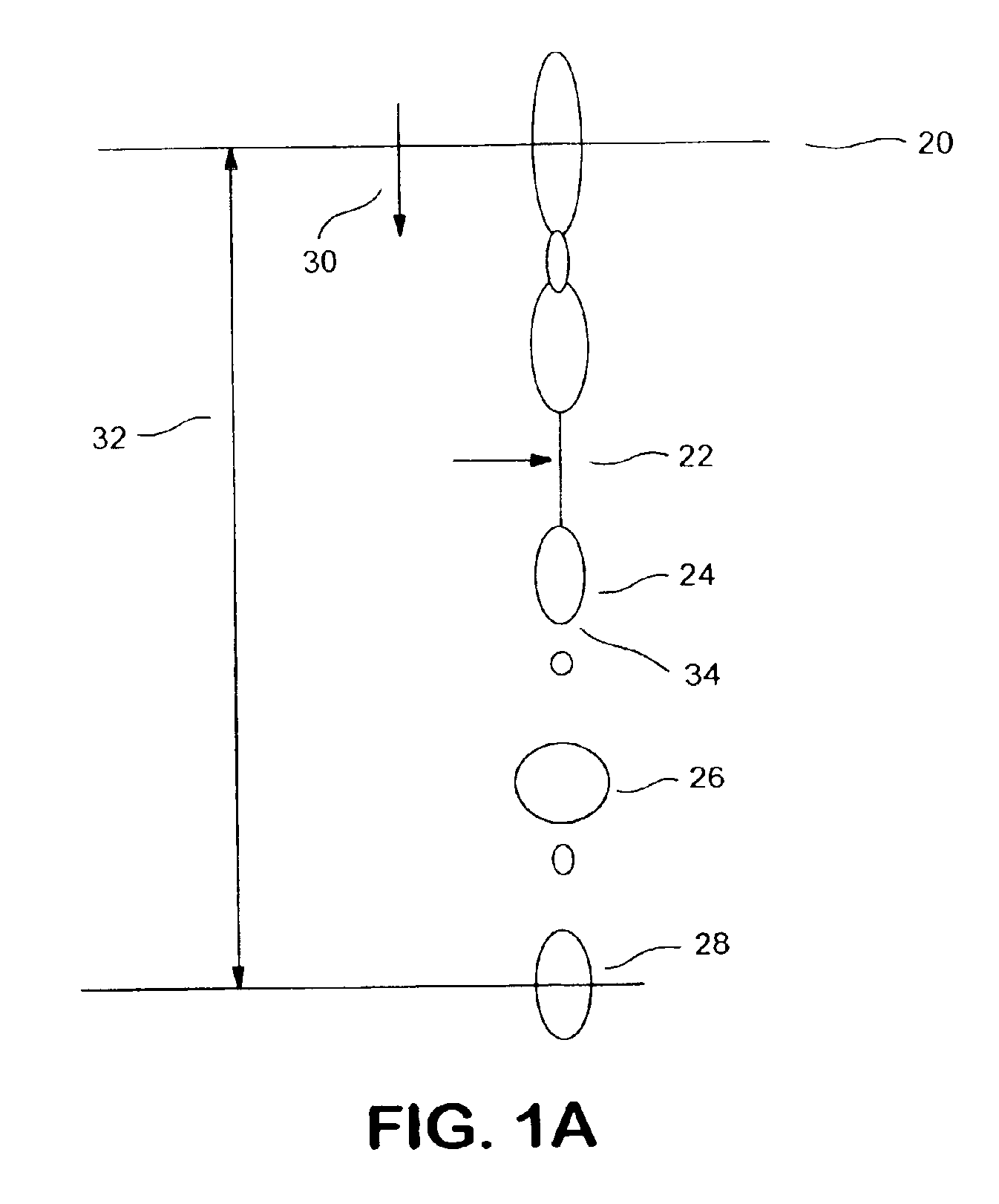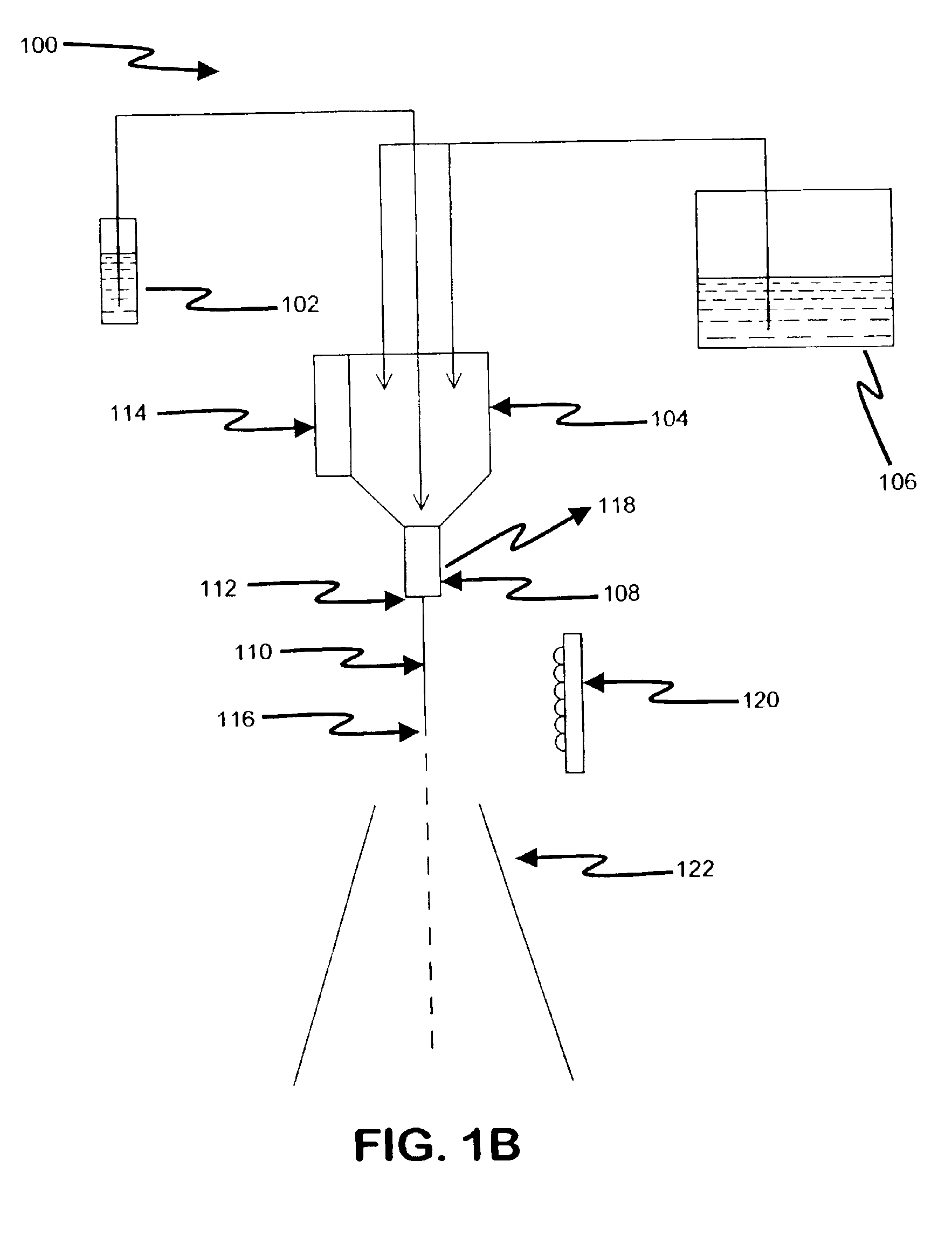Monitoring and control of droplet sorting
a droplet sorting and monitoring technology, applied in the field of flow cytometer systems, can solve the problems of adversely affecting the performance of the electrostatic sorter, affecting the quality of the droplet sorting, and requiring an operator to monitor these parameters constantly, so as to achieve the effect of enhancing the image and reducing the nois
- Summary
- Abstract
- Description
- Claims
- Application Information
AI Technical Summary
Benefits of technology
Problems solved by technology
Method used
Image
Examples
example 1
Performance of the Method: Multiple Imaging / Generation of Numerical Averages from Histograms
[0138]This example demonstrates how the method and system of this invention enables the cytometer operator to maintain the stability of the sort in the event of a change in condition, e.g., a temperature change. According to this invention, the operator obtains images of the stream, specifically a selected region of the stream, generates a histogram display thereof, analyzes the histogram data to generate the reference standard and sample average values, and makes corrections for the change in temperature to stabilize the sort.
[0139]An isotonic sheath fluid with no sample particles was introduced into a commercial flow sorter, e.g., the COULTER® ELITE™ flow cytometer or the COULTER® EPICS® ALTRA™ flow cytometer (Beckman Coulter, Inc, Miami, Fla.). As imaging means, these cytometers contain an integrated CCD video camera, a commercial video digitizing processor (Integral Technologies, Indianap...
example 2
Energy Coupling Variation
[0147]This example demonstrates the effectiveness of the present invention to obtain images of a stream, specifically a selected region of the stream, to analyze this region of the stream, and to make corrections in the sort where the change in sort conditions is caused by a change in energy coupling efficiency. Energy coupling efficiency can dampen the growth of the disturbance causing breakoff and correspondingly, affects the breakoff point. Energy coupling efficiency is the amount of energy transferred from the oscillator to the stream.
[0148]The method and system of this invention is performed as initially described in Example 1, except that after the reference histogram for a stable sort was established (FIG. 5A), the reference standards were calculated as 0.900 for the slope and 380 for the midpoint. A change in sort conditions resulted in a multiple (10) running consecutive sample histogram of FIG. 5B. The corresponding sample average was obtained by a...
PUM
| Property | Measurement | Unit |
|---|---|---|
| pressures | aaaaa | aaaaa |
| frequency | aaaaa | aaaaa |
| voltage | aaaaa | aaaaa |
Abstract
Description
Claims
Application Information
 Login to View More
Login to View More - R&D
- Intellectual Property
- Life Sciences
- Materials
- Tech Scout
- Unparalleled Data Quality
- Higher Quality Content
- 60% Fewer Hallucinations
Browse by: Latest US Patents, China's latest patents, Technical Efficacy Thesaurus, Application Domain, Technology Topic, Popular Technical Reports.
© 2025 PatSnap. All rights reserved.Legal|Privacy policy|Modern Slavery Act Transparency Statement|Sitemap|About US| Contact US: help@patsnap.com



